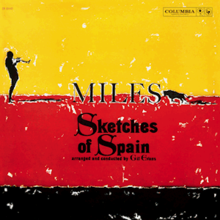
The flugelhorn, also spelled fluegelhorn, flugel horn, or flügelhorn, is a brass instrument that resembles the trumpet and cornet but has a wider, more conical bore. Like trumpets and cornets, most flugelhorns are pitched in B♭, though some are in C. It is a type of valved bugle, developed in Germany in the early 19th century from a traditional English valveless bugle. The first version of a valved bugle was sold by Heinrich Stölzel in Berlin in 1828. The valved bugle provided Adolphe Sax with the inspiration for his B♭ soprano (contralto) saxhorns, on which the modern-day flugelhorn is modelled.
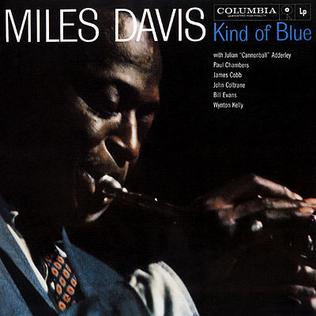
Kind of Blue is a studio album by the American jazz trumpeter and composer Miles Davis. It was released on August 17, 1959 through Columbia Records. For the recording, Davis led a sextet featuring saxophonists John Coltrane and Julian "Cannonball" Adderley, pianist Bill Evans, bassist Paul Chambers, and drummer Jimmy Cobb, with new band pianist Wynton Kelly appearing on one track – "Freddie Freeloader" – in place of Evans. The recording took place on March 2 and April 22, 1959 at Columbia's 30th Street Studio in New York City.
"Spain" is an instrumental jazz fusion composition by jazz pianist and composer Chick Corea. It is likely Corea's most recognized piece, and is considered a jazz standard.

Miles Ahead is an album by Miles Davis that was released in October 1957 by Columbia Records. It was Davis' first collaboration with arranger Gil Evans following the Birth of the Cool sessions. Along with their subsequent collaborations Porgy and Bess (1959) and Sketches of Spain (1960), Miles Ahead is one of the most famous recordings of Third Stream, a fusion of jazz, European classical, and world musics. Davis played flugelhorn throughout.
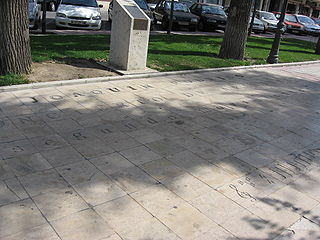
The Concierto de Aranjuez is a concerto for classical guitar by the Spanish composer Joaquín Rodrigo. Written in 1939, it is by far Rodrigo's best-known work, and its success established his reputation as one of the most significant Spanish composers of the 20th century.
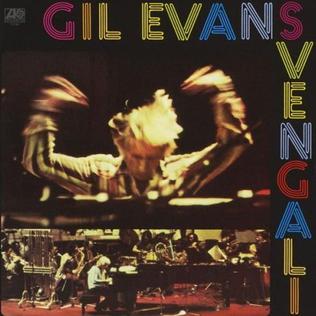
Svengali is a live album by jazz composer, arranger, conductor and pianist Gil Evans, recorded in 1973 by Evans with an orchestra featuring Ted Dunbar, Howard Johnson, David Sanborn, Billy Harper, Richard Williams, Trevor Koehler, and Hannibal Marvin Peterson. The name of the album is an anagram for Gil Evans.

Porgy and Bess is a studio album by the jazz musician Miles Davis, released in March 1959 on Columbia Records. The album features arrangements by Davis and collaborator Gil Evans from George Gershwin's 1935 opera of the same name. The album was recorded in four sessions on July 22, July 29, August 4, and August 18, 1958, at Columbia's 30th Street Studio in New York City. It is the second collaboration between Davis and Evans and has garnered much critical acclaim since its release, being acknowledged by some music critics as the best of their collaborations. Jazz critics have regarded the album as historically important.
Fantasía para un gentilhombre is a concerto for guitar and orchestra by the Spanish composer Joaquín Rodrigo. The concerto is Rodrigo's most popular work after the famous Concierto de Aranjuez.

Joaquín Rodrigo Vidre, 1st Marquess of the Gardens of Aranjuez, was a Spanish composer and a virtuoso pianist. He is best known for composing the Concierto de Aranjuez, a cornerstone of the classical guitar repertoire.

Electric Tears is the ninth studio album by Buckethead. It is considered one of his most emotional and introspective albums, bearing many similarities to his previous release Colma. The entire album is played solely on acoustic and electric guitar.
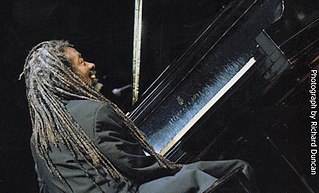
Robert Irving III is an American pianist, composer, arranger and music educator.

The Jazz Composer's Orchestra is a 1968 album by the Jazz Composer's Orchestra recorded over a period of six months with Michael Mantler as composer, leader and producer. Many of the key figures in avant-garde jazz from the time contributed on the album including Don Cherry, Pharoah Sanders, Gato Barbieri, Larry Coryell, Roswell Rudd, and Carla Bley. The album's finale features a two-part concerto for Cecil Taylor and orchestra.

Miles & Quincy: Live at Montreux is a collaborative live album by American jazz trumpeter Miles Davis and conductor Quincy Jones. It was recorded at the 1991 Montreux Jazz Festival and released by Warner Bros. Records in 1993.

Miles Davis & Gil Evans: The Complete Columbia Studio Recordings is a box set of music by jazz musicians Miles Davis and Gil Evans originally released on CD in 1996 and remastered and re-released in 2004. It collects work from 1957 through 1968 at Columbia Records recording studios.
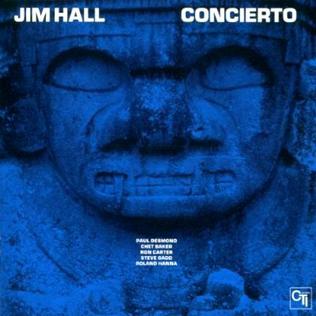
Concierto is an album by the Jim Hall sextet, featuring Paul Desmond, Chet Baker, Ron Carter, Steve Gadd and Roland Hanna. It was produced by Creed Taylor for his CTI Records label and recorded at Van Gelder Studio in New Jersey on April 16 and 23, 1975. Concierto is named after the featured 19-minute jazz version of the classical piece for guitar, Concierto de Aranjuez by Joaquín Rodrigo.
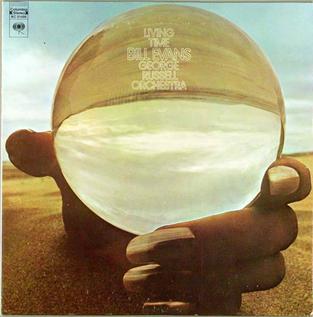
Living Time is an album by the Bill Evans George Russell Orchestra recorded in 1972 and released on the Columbia label, featuring performances by Evans with an orchestra conducted by Russell.
Concierto de Aranjuez is a composition for classical guitar and orchestra by Joaquín Rodrigo.

Quiet Nights is a studio album by the American jazz trumpeter Miles Davis, and his fourth album collaboration with arranger and conductor Gil Evans, released in 1963 on Columbia Records, catalogue CL 2106 and CS 8906 in stereo. Recorded mostly at Columbia's 30th Street Studios in Manhattan, it is the final album by Davis and Evans.

Directions is a compilation album by American jazz musician Miles Davis, released in 1981 by Columbia Records. It collects previously unreleased outtakes that Davis recorded between 1960 and 1970. Directions was the last of a series of compilation albums—mostly consisting of, at that time, previously unreleased music—that Columbia released to bridge Davis' recording hiatus that ended with the Man with the Horn in July 1981.
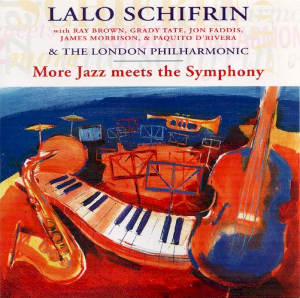
More Jazz Meets the Symphony is an album by Argentine-American composer, pianist and conductor Lalo Schifrin with bassist Ray Brown, drummer Grady Tate, trumpeter Jon Faddis, multi-instrumentalists Paquito D'Rivera and James Morrison, and the London Philharmonic Orchestra recorded in 1993 and released on the Atlantic label. The album was the second in Schifrin's highly acclaimed "Jazz Meets the Symphony" series.
